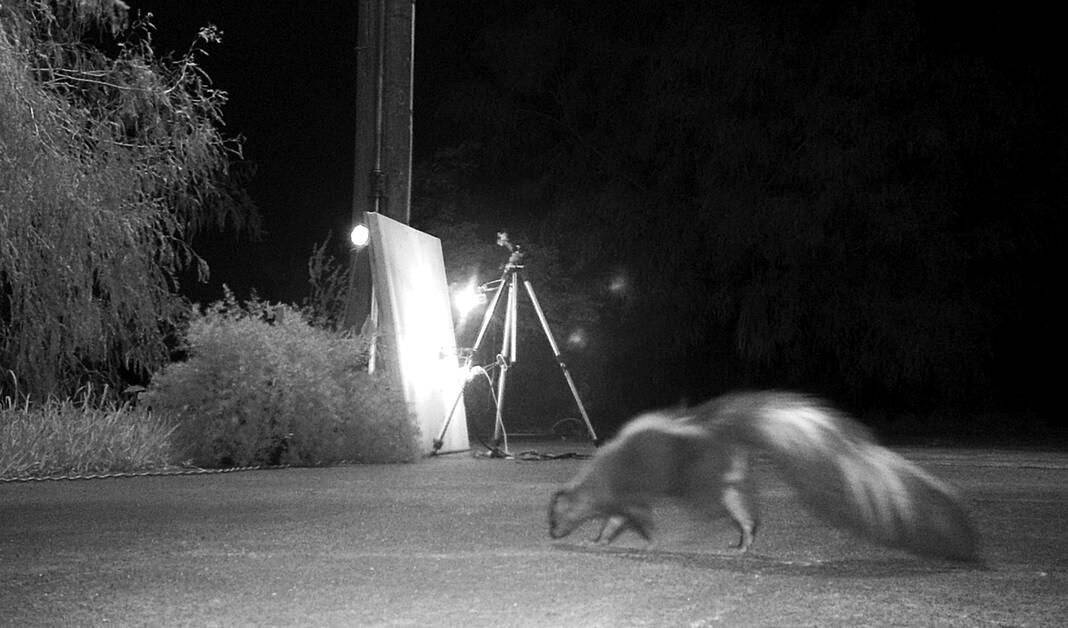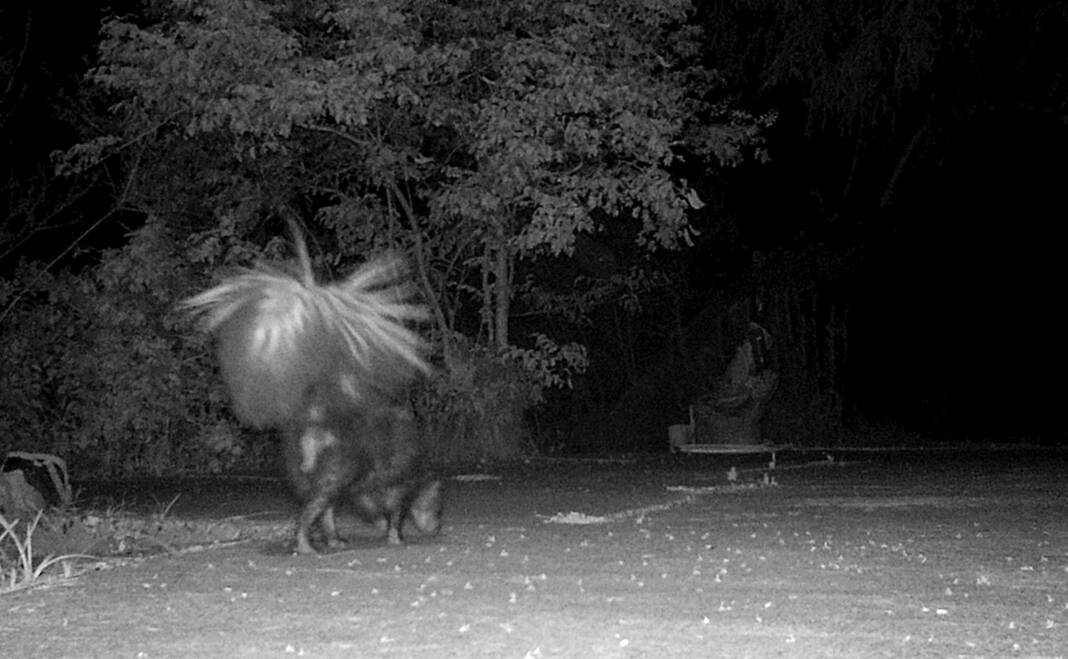|
Only have a minute? Listen instead
Getting your Trinity Audio player ready...
|

Getting a photograph of a skunk was not on my bucket list so I have never written about skunks.
That changed. I went to check my moth sheet and black light set up one evening recently for the first collection of interesting night flying insects of the year. A flash of black and white caught my attention. I was more than a little apprehensive and then photographer’s instinct took over.
With trembling hands, I managed two less than stellar shots with my phone camera before scurrying back to the house to see what was really there. It was a skunk.
The next morning, I began my pre-dawn routine of checking the moth sheet periodically, beginning about 4 a.m. I exited the side door of the garage. As I cleared the corner, the skunk was ambling across the driveway, nose down, headed toward the grass near the moth sheet.
Startled, adrenaline pumping, I tried to ready the camera. The skunk, apparently alerted to my presence, not more than 15 feet away, raised its tail. And what a huge tail it was. I did not get that photograph.
During the safety of daylight, I set up a field camera to track the skunk’s movements so I would know when to safely check the moth sheet without fear of being sprayed. I also researched skunks.
The following information is so you can make your own judgement because even if you’ve never seen a skunk, it doesn’t mean they are not in your neighborhood.
Skunks have adapted to urban and suburban environments. During the day, they nest in dens abandoned by other animals, and in brush piles, hollowed logs and culverts. They take advantage of human-made structures to create dens under buildings, porches, decks, patios, sheds, pier and beam foundations, in crawl spaces and even under concrete foundations.
The striped skunk, Mephitis, mephitis, is the most common skunk in Texas and found throughout the state. They are solitary animals. They explore their territory at night, looking for food and water; they sleep during the day. Their range generally is from one-half to two miles.
Skunks are both nocturnal, (active at night) and crepuscular, active around dusk and dawn, going back to their den in the interim.

The most noticeable thing I gleaned from field camera images was the enormous, awkward, out-of-proportion-seeming tail, bigger than the skunk itself.
Skunks are typically around the size of house cats, eight to 19 inches long. Their tail adds another five to 15 inches to their length.
A skunk’s tail is covered with hard, poisonous spikes that are hidden by their long fur. They also use their tails to store their foul-smelling skunk musk, which comes from glands near the base of their tails.
The spray is an oily liquid, and can cause temporary blindness and pain, if sprayed in the eyes.
A skunk raises its tail as a warning to predators, signaling what’s to come; before they raise their tail, they hiss or growl, stomp their front feet and click their teeth as a warning.
Most skunks can accurately spray from about 15 feet away. The spray can travel up to a mile in the wind.
“A skunk will only spray you if it feels threatened, so quietly walk away from a skunk if you encounter one in the wild,” according to information at Wikihow.com. “Skunks can only spray about five or six times in a row. Their spray is their only defense against predators, so they don’t want to spray you. It may take eight to 10 days for a skunk to replenish its spray.”
Odor from skunk spray lingers about two to three weeks. The malodorous scent is from substances called thiols, which contain sulfur.
Skunk deodorizers are available commercially. The Internet offers home recipes.
Striped skunks are omnivores; their diet consists of about 80% insects, worms, small rodents, birds, and reptiles. They also eat berries, acorns, leaves, grasses and other vegetable matter. In warmer months they eat beetles, bees, fruit, roots, fish, snakes, crustaceans, garbage and carrion.
Skunks are prey to great horned owls. Coyotes, bobcats and dogs are known to kill and eat skunk, but rarely do, according to National Wildlife Federation Internet literature.
It is worthwhile to read about Texas skunks. Websites advise on what attracts them to your yard, how to discourage them and how to evict them if you suspect you are an involuntary landlord to the smelly critters.
A useful Internet site to explore is at this link: https://www.poison.org/articles/what-happens-if-a-skunk-sprays-me-213
These sources were helpful in writing this article: Wikihow.com, PBS.org, Texas Tech University, Natural Science Research Laboratory, Texas A&M AgriLife Extension, articles in Texas Parks & Wildlife Department online publications, naturetourism.tamu.edu.
Anita Westervelt is a Texas Master Naturalist.



